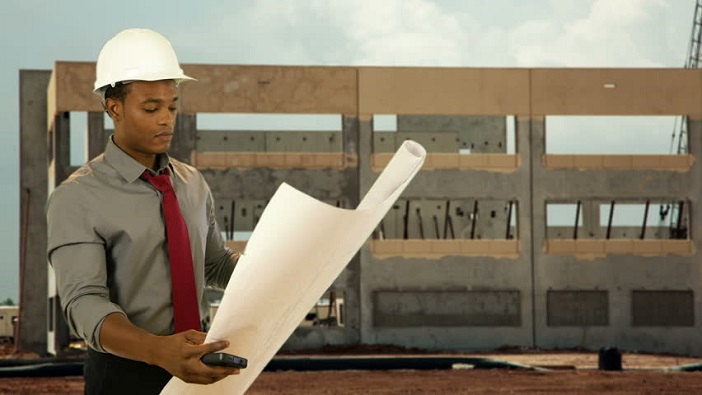Architect Rules for Designing Classic Interiors
Architect Rules for Designing Classic Interiors
Blog Article
Understanding the Diverse Career Paths Available for Aspiring Architect
As an ambitious Architect, you have a globe of job paths waiting for you. Each course offers unique difficulties and chances to use your imagination and technological knowledge. Whether you're drawn to conventional architecture or the subtleties of sustainable style, there's a specific niche that lines up with your rate of interests. Comprehending these diverse choices can form your specialist trip, however which instructions will you pick to check out first?
Typical Style: Creating Structures and buildings
Conventional style focuses on developing structures and structures that blend capability with visual allure. As you discover this area, you'll value the elaborate equilibrium between form and purpose. You'll discover to draw motivation from historical designs, integrating elements like symmetry, materials, and workmanship. Your styles can show cultural heritage, showcasing local traditions while satisfying contemporary demands.
You'll develop skills in preparing, model-making, and website evaluation, permitting you to visualize and interact your concepts efficiently. Involving with clients, you'll need to comprehend their vision and convert it right into feasible styles.
In addition, constructing codes and sustainability methods are essential in your job, guaranteeing your structures are ecologically pleasant and safe. As you expand in your career, you'll discover possibilities in residential, business, or also remediation tasks, each offering one-of-a-kind challenges. Accepting traditional style leads the way for a fulfilling career that admires the past while forming the future.
Urban Planning: Shaping Neighborhoods and Public Spaces
As an ambitious Architect, you can play a vital role as a metropolitan planner, changing how areas function and communicate. By employing community interaction strategies, you'll ensure that residents have a voice fit their setting. And also, integrating lasting design principles will certainly assist create areas that not just fulfill today's requirements yet also safeguard the future.
Role of Urban Planners
While several may think of engineers as the sole enthusiasts behind structures, urban organizers play a crucial duty in forming the wider landscape of neighborhoods and public rooms. By working together with different stakeholders, you'll help design parks, transport systems, and property locations that advertise social interaction and accessibility. Your proficiency in spatial design and neighborhood dynamics enables you to picture future growth while preserving cultural heritage.
Area Interaction Techniques
Effective neighborhood engagement techniques are essential for metropolitan coordinators to ensure that the voices of locals are listened to and valued in the preparation process. To promote significant discussion, you should prioritize open discussion forums and workshops where area members can express their concepts and concerns. Use studies and social media sites to reach a wider target market, guaranteeing diverse perspectives are consisted of. Collaborating with neighborhood companies can improve count on and facilitate deeper connections. It is necessary to provide clear information regarding suggested tasks and decision-making processes, allowing residents to feel enlightened and empowered. By proactively listening and incorporating feedback, you'll develop rooms that reflect the community's needs, eventually causing even more successful and sustainable metropolitan settings. Accept openness and constant dialogue for long lasting effect.
Sustainable Style Principles
When developing urban rooms, integrating lasting style concepts is important for creating settings that grow both ecologically and socially. Consider integrating eco-friendly areas, like parks and yards, to enhance biodiversity and improve air quality.
Designing with water preservation in mind is also key-- think regarding rainfall yards and absorptive surface areas to handle stormwater. Involving area participants during the planning procedure guarantees that the areas you produce satisfy their requirements and urge social interaction. By embracing these principles, you'll add to vibrant, lasting urban landscapes that profit everybody.

Landscape Design: Producing Lasting Outdoor Atmospheres
As you check out landscape architecture, you'll uncover vital style principles that develop beautiful and functional exterior spaces. Sustainable methods play a vital duty in making certain these environments thrive while minimizing ecological impact. Plus, you'll find a variety of occupation opportunities that enable you to make a real distinction in just how people communicate with nature.
Layout Concepts in Landscape
Understanding layout principles in landscape architecture is vital for producing lasting outdoor environments that harmonize with nature. You'll need to consider components like balance, percentage, and range to ensure your styles feel cohesive and inviting. Including native plants not only boosts biodiversity yet additionally minimizes water use, making your landscape resistant. Think of the circulation of room and just how individuals connect with it; paths and seating locations should welcome exploration and leisure. Furthermore, focus on seasonal modifications, designing with products that complement the surroundings year-round (Architect). By prioritizing sustainability and aesthetic appeals, you can create outside rooms that enrich the area and promote health. Accepting these principles will establish a solid foundation for your career in landscape architecture.
Lasting Practices Summary
Lasting practices in landscape design not just concentrate on aesthetic appeals yet also prioritize eco-friendly wellness and resource conservation. You can make rooms that promote soil health and wellness, such as practicing and utilizing natural products permaculture concepts. Ultimately, these methods ensure your styles profit both individuals and the setting for years to come.
Career Opportunities Exploration
With a strong foundation in sustainable techniques, landscape design uses a selection of job paths that allow you to make a significant influence on the environment. You could work as a landscape designer, creating visually pleasing and practical outside rooms, or concentrate on ecological repair, helping to restore damaged ecological communities. Urban planners commonly work together with landscape designers to produce green rooms in city setups, boosting city livability. If you're passionate about education, consider becoming a landscape design instructor, motivating future generations. Furthermore, you may deal with nonprofits concentrated on environmental sustainability or participate in research study to innovate new techniques. Each course not only forms attractive settings however also fosters a healthier world for future generations.
Lasting Style: Concentrating On Eco-Friendly Practices
As you explore your job in architecture, accepting environment-friendly practices can establish you apart in an affordable field. Lasting design focuses on creating structures that minimize ecological influence while enhancing passenger wellness. By including renewable materials, energy-efficient systems, and lasting structure strategies, you'll add to a greener future.
Beginning by gaining understanding of environment-friendly certifications like LEED or BREEAM, which can boost your qualifications. Consider exactly how all-natural light, air flow, and thermal performance can maximize design. Work together with designers and ecological professionals to innovate solutions that reduce waste and conserve resources.
Don't fail to remember the importance of neighborhood participation-- interesting neighborhood stakeholders can inspire designs that integrate with the environment. As clients progressively prioritize sustainability, your experience in eco-friendly techniques will not only attract tasks yet additionally fulfill your interest for liable design. Welcome this important facet of the career, and watch your profession flourish.
Historical Conservation: Shielding and Recovering Cultural Heritage
While you commence on your architectural trip, take into consideration the crucial duty of historical conservation in preserving our cultural heritage. This field concentrates on the security and reconstruction of substantial structures, sites, and structures that inform the stories of our past. By participating in historic conservation, you'll assist protect the architectural heritage that shapes area identification.
As a historical preservation Architect, you'll evaluate historical relevance and evaluate the problem of structures. You'll function closely with preservationists and historians to assure authentic reconstruction methods are employed. This profession course enables you to blend creative thinking with research study, allowing you to make remedies that appreciate original products and craftsmanship.
Your work not just contributes to sustainability by reusing existing buildings yet also promotes a feeling of pride within neighborhoods. Welcoming this path will certainly aid you end up being a guardian of background, maintaining the stories and aesthetics that enhance our lives.
Inside Style: Enhancing Indoor Spaces
Historic preservation and indoor architecture both share a commitment to boosting the constructed environment, however they concentrate on different elements. While historical conservation stresses maintaining a structure's historic and social worth, interior architecture absolutely nos in on maximizing interior areas for functionality and aesthetic appeals.
As an aspiring Architect, you'll find that interior design enables you to mix creative thinking with technical skills. You'll develop areas that not only look great but likewise promote comfort and effectiveness. my response This field includes recognizing just how light, shade, and products connect within a room, influencing state of mind and use.
You'll function on numerous tasks, from household homes to commercial workplaces, ensuring that each environment meets the see this demands of its owners. By focusing on customer experience, you can change insides into inspiring and functional rooms, making a significant effect on how people interact with their surroundings. Embrace the opportunity to boost interior environments and shape the way individuals work and live.
Industrial Layout: Combining Performance With Looks
Commercial style plays a vital role in developing items that perfectly mix aesthetic appeals with performance, ensuring that what you utilize everyday is not only visually enticing however additionally functional. As a hopeful Architect, you could engage yourself in this area, concentrating on developing everything from furnishings to consumer electronic devices. Your work entails understanding user requirements, materials, and producing processes, enabling you to create ingenious solutions that boost everyday experiences.
In industrial style, you'll commonly team up with producers, online marketers, and engineers, ensuring that your designs are not just attractive yet also practical. This career path uses a dynamic environment where creativity meets usefulness, making it a satisfying option for architects interested in forming the items of tomorrow.
Often Asked Questions
What Educational Certifications Do I Need to End Up Being a Designer?
To become a designer, you'll require an expert degree in design, typically a Bachelor's or Master's. Additionally, you'll need to complete a teaching fellowship and pass the Architect Enrollment Assessment to practice legitimately.
Are There Certification Needs for Different Architectural Occupation Paths?
Yes, there're certification needs for various architectural courses. Architect. You'll need to pass tests, complete teaching fellowships, and in some cases pursue specialized training, relying on your selected emphasis, like landscape architecture, city design, or historic conservation
What Software Application Skills Are Necessary for Architects Today?

How Can I Gain Practical Experience While Researching Design?
You can acquire practical experience by interning at building firms, joining design competitors, volunteering for area jobs, or teaming up with classmates on real-world jobs. These chances boost your skills and build useful connections in the market.
What Job Opportunities Exist Outside Typical Architecture Firms?
You can discover various task opportunities outside conventional style firms, like metropolitan preparation, interior decoration, landscape style, construction administration, realty development, or even roles in sustainability consulting. Each deals distinct difficulties and benefits.
Whether you're attracted to typical architecture or the nuances of lasting layout, there's a niche that lines up with your interests.When creating city spaces, integrating lasting style concepts is important for developing settings that thrive both ecologically and socially.As you check out landscape design, you'll find necessary layout concepts that create stunning and practical exterior areas.Comprehending layout principles in landscape design is necessary for developing sustainable outdoor environments that harmonize with nature.In industrial design, you'll frequently collaborate with suppliers, designers, and marketing professionals, making sure that your styles are not only gorgeous visit their website yet also feasible.
Report this page